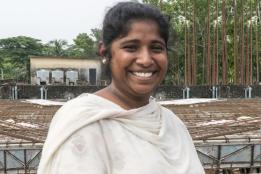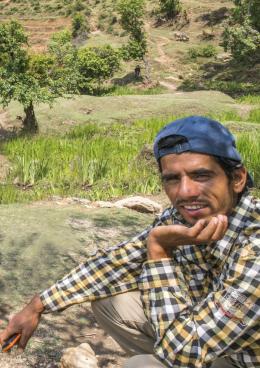PPCR: Climate-Resilient People
People—individuals, groups, and populations around the world—are at the center of the climate crisis. As global temperatures rise and risks from droughts, floods, heatwaves, sea-level rise, cyclones, wildfires, and other extreme weather events increase in frequency and severity, many of the most pro
...People—individuals, groups, and populations around the world—are at the center of the climate crisis. As global temperatures rise and risks from droughts, floods, heatwaves, sea-level rise, cyclones, wildfires, and other extreme weather events increase in frequency and severity, many of the most prominent effects are directly felt by people. Climate change has been shown to drive, intensify, or compound existing socio-economic and humanitarian challenges, such as poverty, public health, conflict, migration, and gender inequality. It is also leading to new challenges for people and populations, such as the need for: climate information services, loss and damage from anticipated climate events, and managed retreat from inhospitable areas. Moreover, both effects and vulnerabilities related to climate change are deeply inequitable within and across populations. Certain populations face increased threats due to geographic circumstances, socio economic profile, dependency on natural resources for livelihoods, and other factors, while specific groups and individuals within populations also face disproportionate vulnerability or effects from climate change due to gender, poverty, disability status, socio-cultural context, and other factors. Men and women, in particular, experience the impacts of climate change in different ways due to the critical role that socio-economic structures play in determining their overall vulnerability and exposure to climate risks.
Launched in 2008 under the Climate Investment Funds (CIF), the $1.1 billion Pilot Program for Climate Resilience (PPCR) and accompanying Business Development for Resilience Program (BDRP) have been supporting climate-vulnerable individuals, groups, and populations in 17 countries and two regional tracks for nearly 15 years. PPCR’s country led Strategic Programs for Climate Resilience (SPCR) and related investments have aimed to strengthen adaptive capacity and build resilience across sectors, leading to a range of adaptation benefits for men, women, and targeted populations to date. PPCR tracks the “number of people supported to cope with the effects of climate change” as a core indicator of progress toward the program’s main results objectives, along with other supplemental people-related results, such as the “number of persons receiving climate-related training.”
We welcome your feedback
Your input matters. Help us improve the CIF website by completing a brief survey. It will only take two minutes and will support our ongoing efforts to serve you better.





